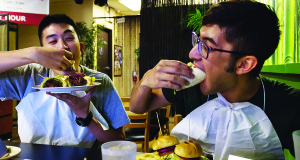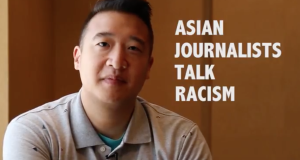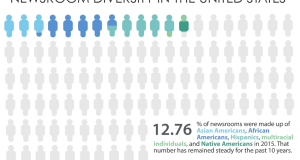The first overseas chapter of the Asian American Journalists Association garnered skepticism when it was first introduced twenty years ago, with only a handful of members.
Back then, AAJA’s officers did not have confidence that AAJA could host events so far from the U.S.
Since then, the AAJA Asia chapter has flourished in membership and diversity.
Chapter members are employed by both Asian outlets and Western organizations with foreign bureaus.
The chapter is a community of professionals that consist mostly of local Asian journalists in the region and Asian Americans who are working abroad.
Angie Lau, the chapter president, notes that some members are neither ethnically Asian nor American citizens.
“This is an organization that bridges international journalists. Whether you are of Asian descent or not, you are working in Asia and have an Asian perspective,” Lau said.
AAJA Asia even reflects that sentiment in its mission statement saying the chapter is committed to serving “media professionals and supporters/sponsors in the Asia Pacific region.”
Brolley Genster, who works at the Korea JoongAng Daily, is an American member in the chapter. He joined because he knew he wanted to work in Seoul, but didn’t know anyone in the journalism field until he joined the Seoul sub-chapter.
“Being able to meet all of these different journalists from different backgrounds than myself has really broadened my perspective and has made me a better media professional,” Genster said via email.
Allen Cheng started the chapter with Alan Ota in 1996. Together, they drafted a plan and proposal that was submitted to AAJA National the fall of 1996, lobbying national and chapter officers. Some officers did not have confidence that AAJA could host events so far from the U.S., “but we eventually got the votes,” Cheng wrote.
By the spring of 1997, AAJA National officially recognized the chapter, right before their first major event — helping over 100 foreign correspondents cover the British Handover of Hong Kong to China.
Ramy Inocencio, anchor and reporter at Bloomberg, former chapter president, said there were no more than 12 AAJA members when he first sat down with the chapter in the spring of 2011.
“It was nice to meet my new chapter, but I honestly thought, ‘God, is that all?’ and wanted to make a change and do more,” he wrote in an email.
About three months later, the chapter had formed its first major event: The AAJA-HKU New Media Conference, partnering with the University of Hong Kong Journalism and Media Studies Center, Inocencio said. The conference had about 100 attendees and was a success, but Inocencio said it was the “first step in a series of more to go.”
In 2015, now known as the New Next Now International Media Conference, or N3Con, the conference announced its Google sponsorship and was hosted in Seoul for the first time. N3Con returned to Seoul this year and drew nearly 300 attendees. Next year’s N3Con will be in Hong Kong.
“We’ve won chapter of the year recently twice in a row,” Sean Lim, former executive director of N3Con, wrote in an email. “The Asia chapter was the largest chapter in all of AAJA in 2015. And with Asia’s rising influence, I believe we as a chapter are creating a model for being strong leaders that the U.S. markets can follow.”
 VOICES Publishing from the AAJA National Convention
VOICES Publishing from the AAJA National Convention








